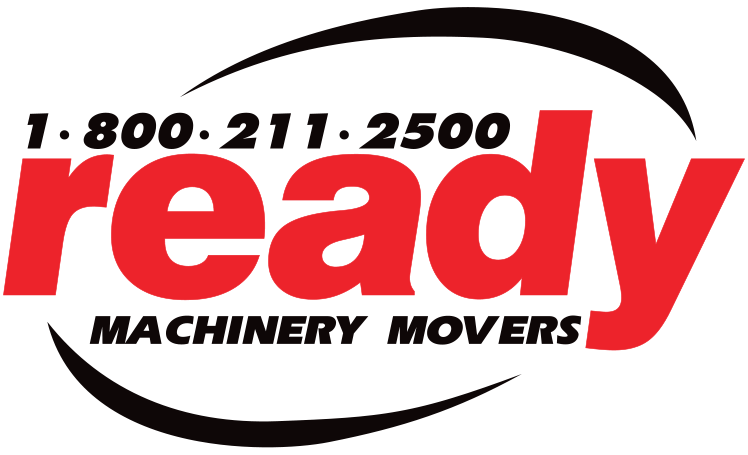When you need equipment shipped across the globe, you need it done safely and efficiently, so that you can stay focused on your day-to-day operations. Understandably, the shipping process may be mysterious to many of us. This isn’t like shipping holiday gifts to your relatives! To alleviate concerns about your property, it helps to understand the steps that go into preparing equipment for overseas shipping. This process starts well before a cargo vessel sets off, and it concludes with a thorough inspection of all items, to make sure no damage has been incurred. To help this process go as smoothly as possible, be as prepared and informed as possible.
To feel confident about the shipping process, start by understanding its various steps. If this is your first time shipping large equipment, an experienced shipping company will walk you through the following options in detail.
- Rust Proofing
During sea travel, machinery may sit in an open-air environment on cargo ships. This exposes your valuable equipment to the elements, including wind and salt water. Travel by train can also leave cargo vulnerable to rain and snow. While any metal can suffer from corrosion, common rust (as we know it) is specific to iron-based metals. Other forms of corrosion may appear as green or white streaks. Because any corrosion can seriously compromise your equipment’s ability to function, a variety of protective techniques will be used to prevent damage. Anti-corrosion treatments are an essential first step before packaging. Depending on the size and condition of equipment, one of the following protective layers will be utilized:
- Galvanization – The “hot dip” method coats your machinery in layers of steel and zinc. The final layer coating a galvanized item is usually pure zinc. Because zinc is shock absorbent, this outer layer also helps protect against jostling and impacts. This method can protect equipment for many years after transport. The “hot dip” substance requires no maintenance, and will not chip or peel.
- Paint – While galvanization creates a compound that bonds with the surface of your machinery, paint sits on top as a separate layer, covering the metal. The paint will help prevent corrosion. Oil-based coatings are well suited to long journeys and extremely harsh conditions, but their removal is more involved than with water-based solutions. With oil, a degreaser or solvent-based compound will be required for removal.
- Plating – Typically composed of zinc and tin, this will provide an additional layer to prevent corrosion. Plating can be used in conjunction with a coating layer or without, depending on the mode of transport. The plating will also provide enhanced protection against abrasions and chemical damage.
- Shrink Wrapping
The specialized plastic coating used in this process is sensitive to temperature. Heat is applied to its surface, causing it to shrink snugly around the contours of your machinery. In some cases, vacuum packing is also employed to attain a perfect fit. The wrapping ultimately forms a customized outer container. This will resist wind, water and other corrosive substances while serving as a buffer to cushion against impacts. The plastic surface of this wrap is UV resistant and protects against road grime and dust as well as sea air (making it ideal for rail or sea travel). Shrink wrap can also be used to keep essential machine components together, preventing breakage or damage to delicate individual parts.
Because stability is pivotal when complex equipment is shipped, your shipping contractor may use a pallet to further secure large items. This sturdy platform will be shrink-wrapped with the machinery, reducing the likelihood of any shifting or sliding during export.
- Containerization
This process entails loading large items into metal shipping containers. These containers come in standardized proportions, ranging from 20 to 53 feet in size. Pallets or skids may be loaded into the container with machinery, to increase stability. Smaller equipment items may be crated and shrink-wrapped before containerization. Containers provide the ultimate protection against corrosion and other damage. This system is most commonly used to transport over water, but smaller containers may also be shipped by rail or air.
Once the freight vessel has reached its destination, containerization aids in the transportation of your machinery over land since containers are easy to move with cranes or forklifts. Your items will be carefully tracked since containers are monitored and sorted by an advanced computer system. This method also simplifies the storage process, since machines can be stored within their containers after arrival, until they’re needed for industrial use. Using a container streamlines the packing process, eliminating the additional travel costs and irritating delays that can result when working with unwieldy (or unusual) items.

- Rail Car Tie-Downs
Trains can be used to transport heavy machinery and large equipment. An expert crew will carefully load, tie down and secure items. This process requires customized lashes and hooks, and equipment will often be skidded as a first step.
The government regulates transport conditions, which helps promote worker safety. If the equipment is not expertly secured, it can damage the freight and threaten the health of anyone involved in the transportation process. Working with an experienced shipping company will guarantee that tie-down regulations are strictly adhered to, avoiding delays and fines as a result of potential mishaps.
- Break Bulk Services
Break Bulk is a method of transporting oversized or awkwardly shaped items. It is used for equipment that cannot fit into regular shipping containers or for equipment that is too heavy to be moved by plane. Break bulk requires the use of cranes and experienced handlers to load it safely on (and off) the transport vessel. Examples of common break bulk items include transformers, cranes, and boats, as well as large construction vehicles.
With break bulk shipping, additional costs may be incurred due to the sensitive, time-consuming loading process, as well as the additional storage space required by large items in transit. However, this method also saves time and money upon arrival. The alternative is disassembling machinery to be treated, packed, and crated separately. Individually crated items need to be carefully unpacked and reassembled after transport. Break bulk shipping means that your machinery is intact and ready to roll upon arrival.
Before you Ship
In the export business, careful planning makes all the difference. Before export, take care to provide your shipping contractor with accurate weight counts and unit dimensions, and be sure to articulate any pressing concerns or questions. By better understanding your needs, a company will be fully equipped to determine which mode of transport will best suit your property – both by land to the freight carrier and during the ensuing journey itself. Clear communication will also help them select the most effective protective methods for your particular machines. Working with an experienced contractor means that they will be familiar with a wide array of industrial items, and will therefore be able to conduct a thorough risk assessment before packaging.
Whether shipping by rail, sea or air, be sure to work with a full-service moving company. By employing experts, your valuable equipment will arrive intact and unscathed, and you will have a clear understanding of the steps involved in the process. With questions about shipping any type of machinery, contact Ready Machinery Movers at 1-800-211-2500. With over 30 years of national and international shipping experience, we’re proud to serve industries throughout Toronto and the Kitchener area.
